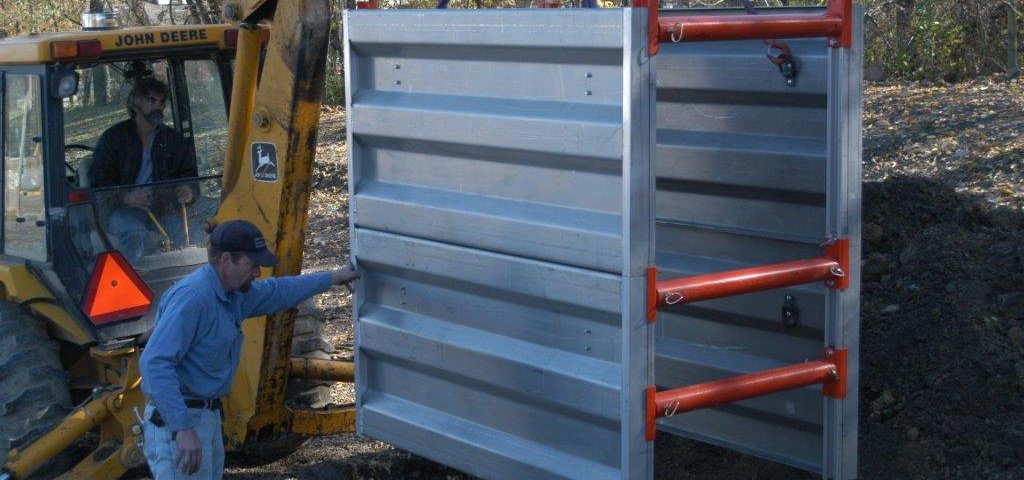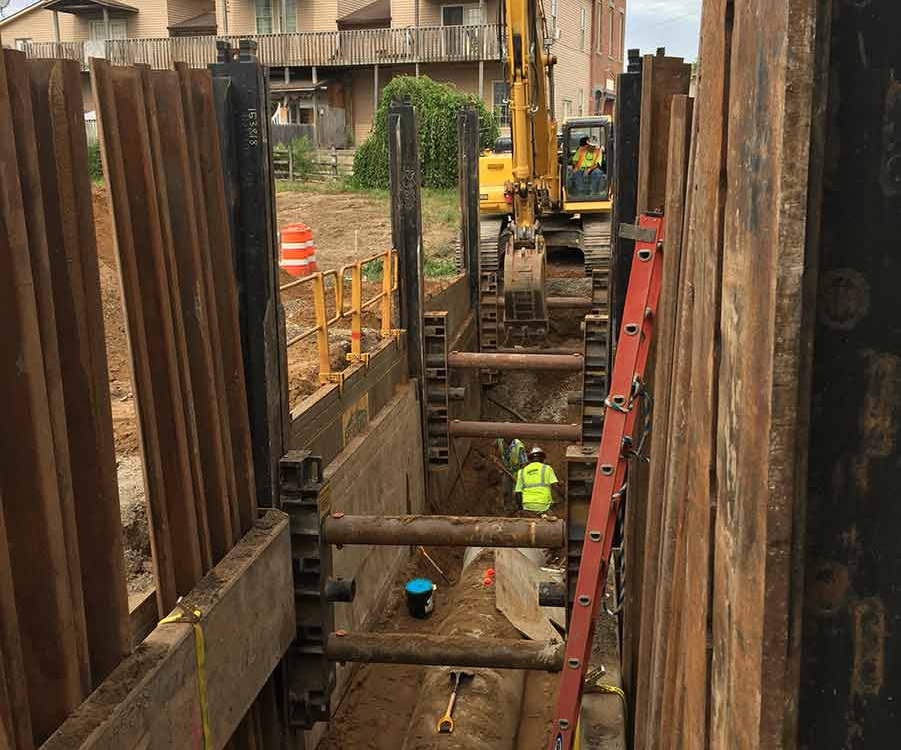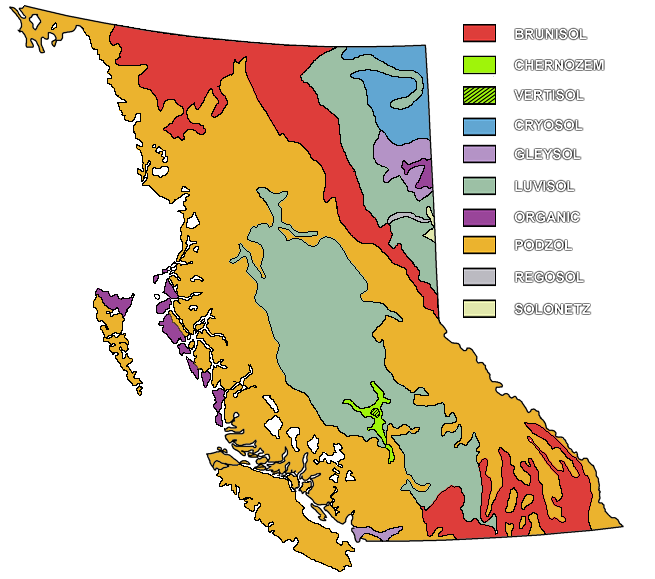
British Columbia’s soil types.
August 26, 2019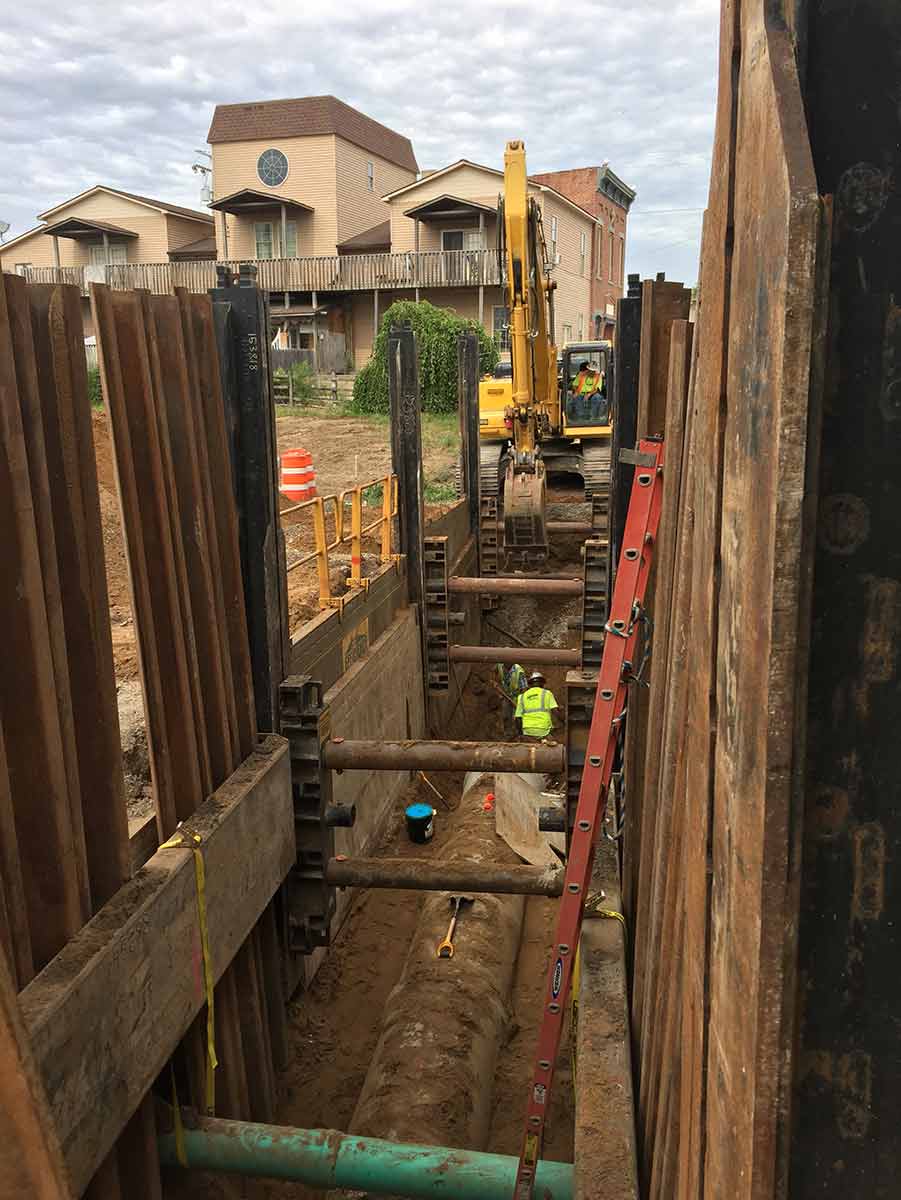
Understanding slide rail systems
August 29, 2019If you are new to the shoring world or just don’t have enough experience with shoring equipment on a construction job yet, you might be confused about some of the trench shielding and shoring options.
It’s important to know what kind of equipment you need to stay safe on the job, Benchmark Group takes very seriously the safety of its clients, making them our top priority at all times.
We know it’s a dangerous job, and we respect those of you that put yourself out there every day without fail.
When it comes to digging trenches on the job, it’s important to know the difference between trench shields and trench shoring.
Trench shoring materials are used to brace the walls of a trench to prevent collapse. Trench shoring can be attained using hydraulic cylinders and FinnForm (special shoring plywood) to protect the workers from getting covered in loose dry dirt. The hydraulic cylinders are pumped until the plates press against the walls of the trench, securing them in place. Sometimes, steel I-beams are inserted into the ground, and then steel plates are slid in alongside them.
Depending on the type and length of the job, some methods are preferred over others.
Trench shields (also sometimes called trench boxes) protect workers while they’re working inside a trench. They adjust to fit the size of the trench and are typically constructed out of steel or aluminum. Unlike trench shoring materials, they are not designed to hold up the walls of a trench; they’re just there to shelter workers from a potentially dangerous collapse.
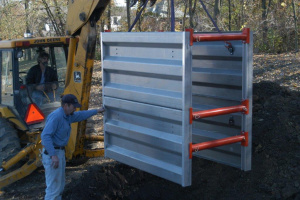
Contact BMG Shoring Solutions today! 800 580 4195

